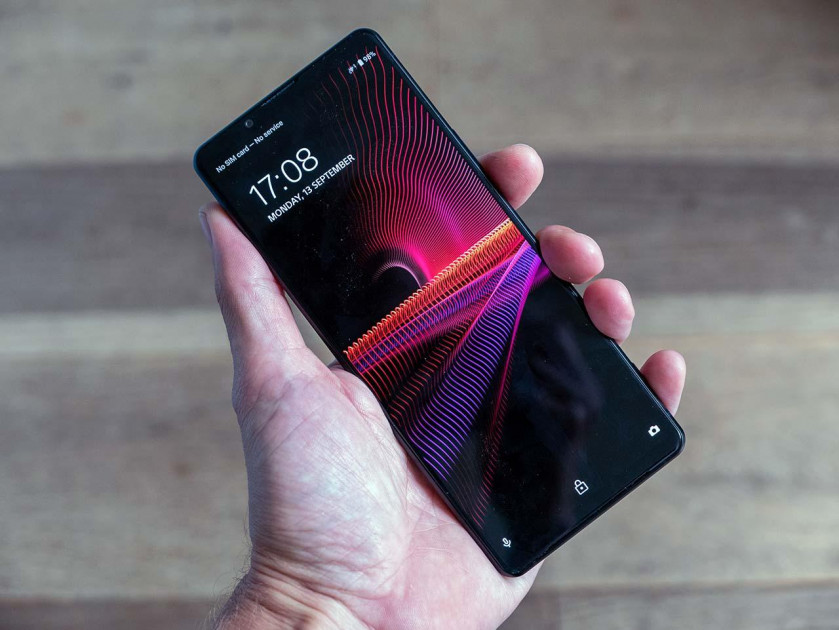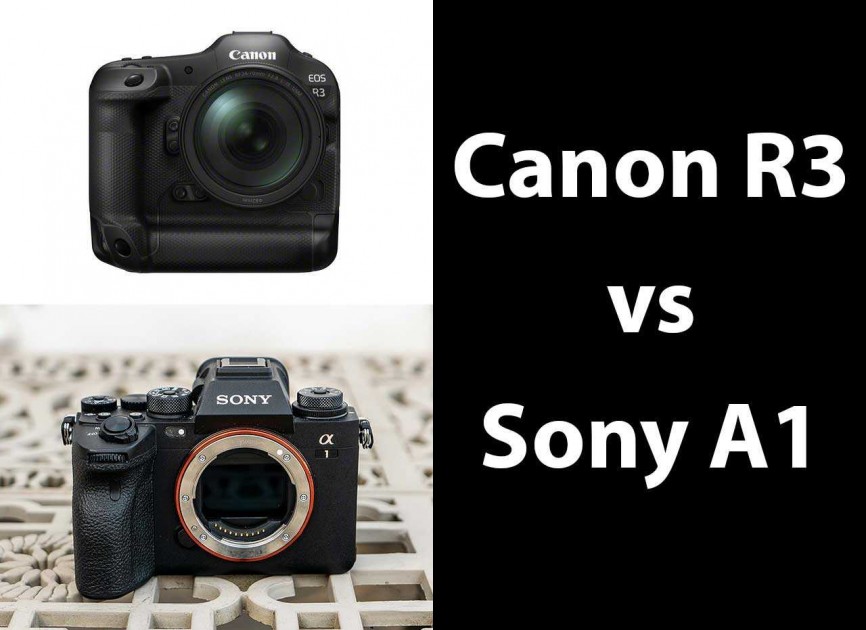The Sony Alpha 9 II and the Canon R3 share quite a lot of similarities when it comes to their core specifications and features, so which one should you pick?
We’re bringing you this in-depth Canon R3 vs Sony A9 II head-to-head comparison to help you choose between these two full-frame mirrorless cameras.
Sensor
The Sony A9 II has a 24 megapixel Stacked, Back-Side Illuminated (BSI) CMOS sensor.
The EOS R3 also uses a stacked BSI sensor, just like the one on the A9 II, with the same 24 megapixel resolution.
Canon have been very quick to point out that the new sensor in the R3 has been developed solely by Canon, though, and not by Sony.
Back-Side Illuminated (BSI) sensors potentially translate into better low-light image quality at like-for-like ISO speeds and faster all-round performance.
ISO Speed
The native sensitivity range of the Sony A9 II is ISO 100 to ISO 51,200, which can be expanded to ISO 50 to ISO 204,800.
The ISO range of the Canon R3 is ISO 100 to ISO 102,400, which can also be expanded to ISO 50 to ISO 204,800, so exactly the same as the Alpha 9 II.
Video
The Canon EOS R3 offers 6K/60p internal recording in addition to oversampled 4K video at up to 120p.
We hope that the larger body and the negative feedback that Canon have received about the R5 means that the new R3 doesn’t suffer from over-heating in the same way that the R5 did.
And that certainly seems to be the case, as Canon are promising that the R3 can record up to six hours of regular video or 1.5 hours at high 119.88/100p frame rates.
The Sony A9 II only supports oversampled 4K recording at up to 30fps and 120fps at 1080p, so it’s clearly not in the same league as the R3.
Autofocus
The Sony A9 II has an AF system with 693 phase detection points that cover approximately 93% of the image area. It offers Real-time Eye AF for humans and animals, but not for birds, as well as Real-time Tracking that automatically maintains accurate focus.
The new Canon R3 has the most advanced version of Dual Pixel CMOS AF that the company has ever produced with 4779 AF points, along with a brand new vehicle tracking mode, which allows you to expertly track motorbikes, open cockpit Formula cars as well as GT and rally cars, and even has the ability to prioritise the vehicle or the driver’s helmet!
In an attempt to get one up on Sony, the Canon R3 also allows you to select and move the AF point just with the look of your eye using the electronic viewfinder..
It remains to be seen just how effective this intriguing new mode will be in real life, but it could give the R3 a real edge when it comes to quickly being able to focus, without even having to touch the camera controls.
Burst Shooting
The Canon R3 ups the ante from the EOS R5’s 20fps mode to provide 30fps shooting with the electronic shutter with full AF/AE tracking and minimal image distortion for 540 JPEG or 150 RAW images.
The Sony A9 II can only shoot at 20fps with the electronic shutter with full AF/AE tracking for up to 361 JPEG or 239 RAW images.
The EOS R3 also has a slight edge when using its mechanical shutter for burst shooting – 12fps on the R3 versus 10fps on the A9 II.
Body and Design
The Sony A9 II largely follows the tried and tested design of seemingly almost every previous Sony Alpha camera – if it ain’t broke, don’t fix it seems to be the mantra for the newest Alpha camera.
The Canon R3 is taking a markedly different approach, featuring a similar integrated grip with duplicated vertical controls that EOS-1D series cameras have always offered.
This means that the R3 will be much bigger and heavier than the A1 out of the box, although fitting a battery grip to the flagship Sony camera may substantially narrow the size and weight differences between them.
Both cameras are fully weather-sealed, as you’d expect from such professional level models.
IBIS
The new Sony A9 II has a 5-axis optical in-body image stabilization system, but it only provides up to 5-stops of compensation – good, but certainly not class-leading.
That accolade goes to the Canon R5 which has a pretty incredible stabilisation system. It features a 5-axis in-body image stabilisation (IBIS) that provides up to 8-stops of IS when using the camera with certain compatible RF-mount lenses.
The new R3 offers the same IBIS system as the R5 – its 5-axis In-Body Image Stabilizer can combine with the Optical Image Stabilizer in selected RF lenses to offer industry-leading performance worth up to 8-stops – once again giving Canon an advantage over the Alpha 9 II.
Viewfinder
The Sony A9 II has a 3.69M dot electronic viewfinder with 0.78x magnification and up to 120fps refresh rate.
The Canon R3 has an higher-resolution 5.76M-dot OLED electronic viewfinder with 0.76x magnification and a 120fps refresh rate, the same as the one found in the EOS R5.
LCD Screen
The Sony A9 II has a 3.0-inch LCD screen with 1.44 million dots of resolution which can be tilted up by 107 degrees and down by 41 degrees.
The EOS R3 has a more versatile vari-angle touch screen which provides greater flexibility of shooting angles thanks to its ability to tilt and rotate into a range of positions.
And it’s much higher-resolution than the Alpha 9’s screen – 4.1-million dots to be exact.
Memory Cards
As you would expect from a professional camera, the Alpha 9 II has dual memory card slots that support SD UHS-I/II compliant memory cards.
The Canon R3 also features dual card slots, but it has one UHS-II SD card slot and one ultra-high speed CFexpress slot.
Battery Life
The Sony A9 II uses exactly the same familiar NP-FZ100 battery that all the other recent Alpha cameras use, which provides up to 500 shots when using the viewfinder and 690 shots when using the LCD monitor.
The EOS R3 uses the LP-E19 series battery from the EOS-1D X III rather than the LP-E6NH series that the EOS R5 uses, which provides up to 620 shots when using the viewfinder and 860 shots when using the LCD monitor.
Price
In the UK the Sony A9 II is priced at around £4,200 body only and in the US it costs around $4,500.
The Canon EOS R3 is priced at £5,879.99 / $5,999.00, so it’s significantly more expensive than the A9 II at the time of writing.
Conclusion
The Sony Alpha 9 II is one of the best sports and wildlife cameras on the market, but now that Canon have disclosed all the key details, it’s apparent that the EOS R3 will be a very serious rival indeed for the A9 II when it launches in November later this year.
So what do you think? Based on what we know so far, would you choose the Sony A9 II or the new Canon R3, and why? Leave a comment below!








